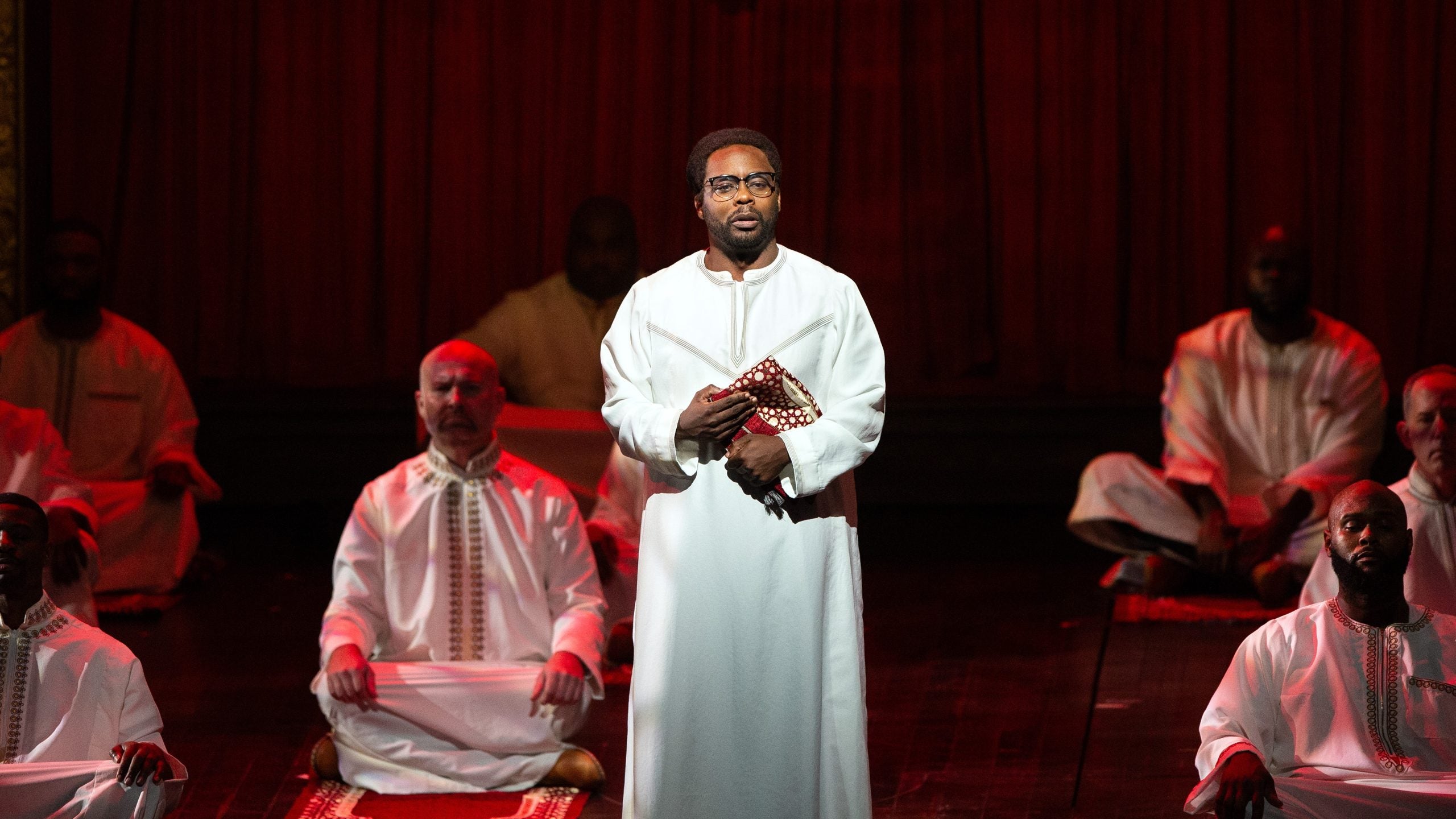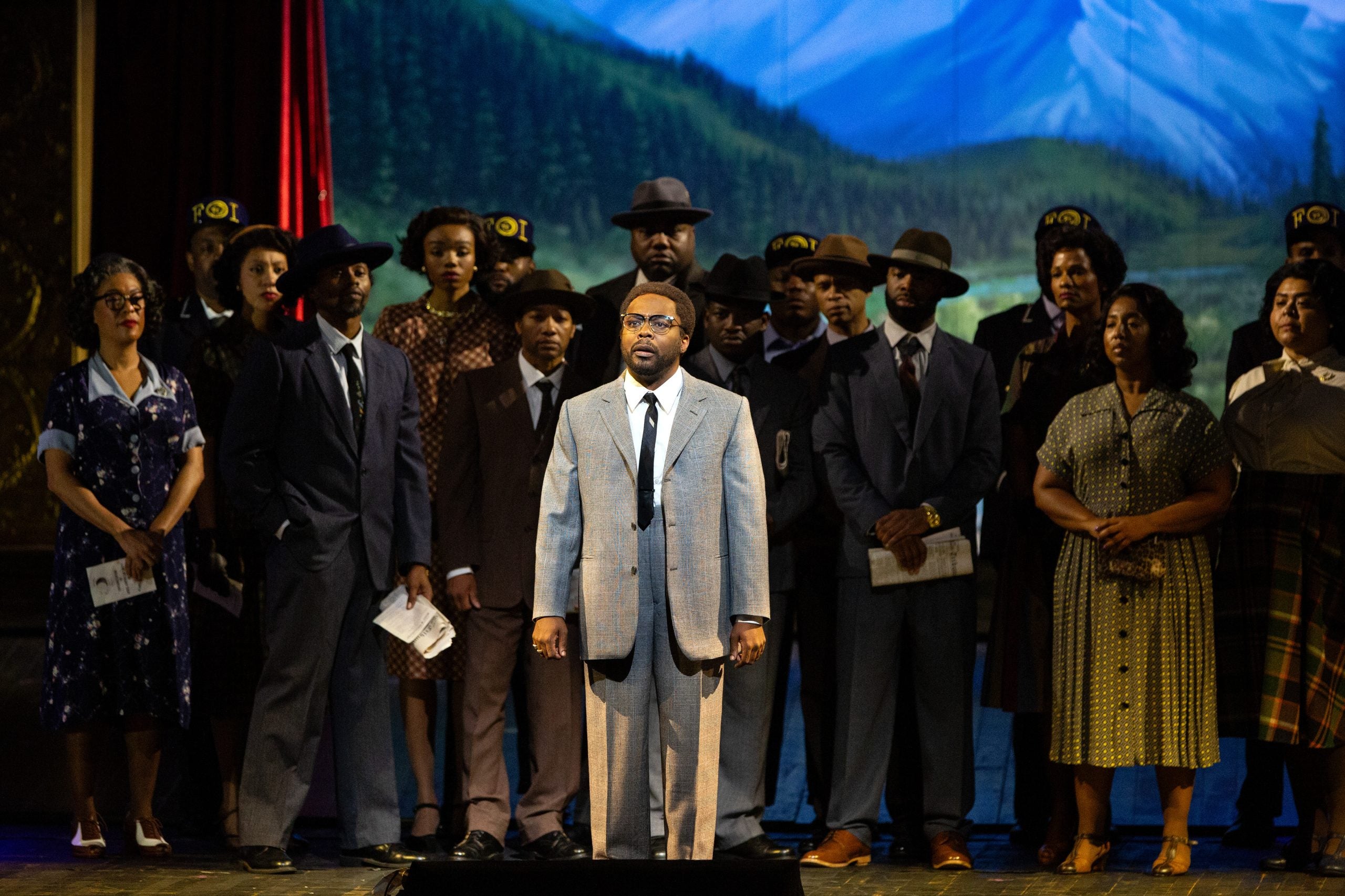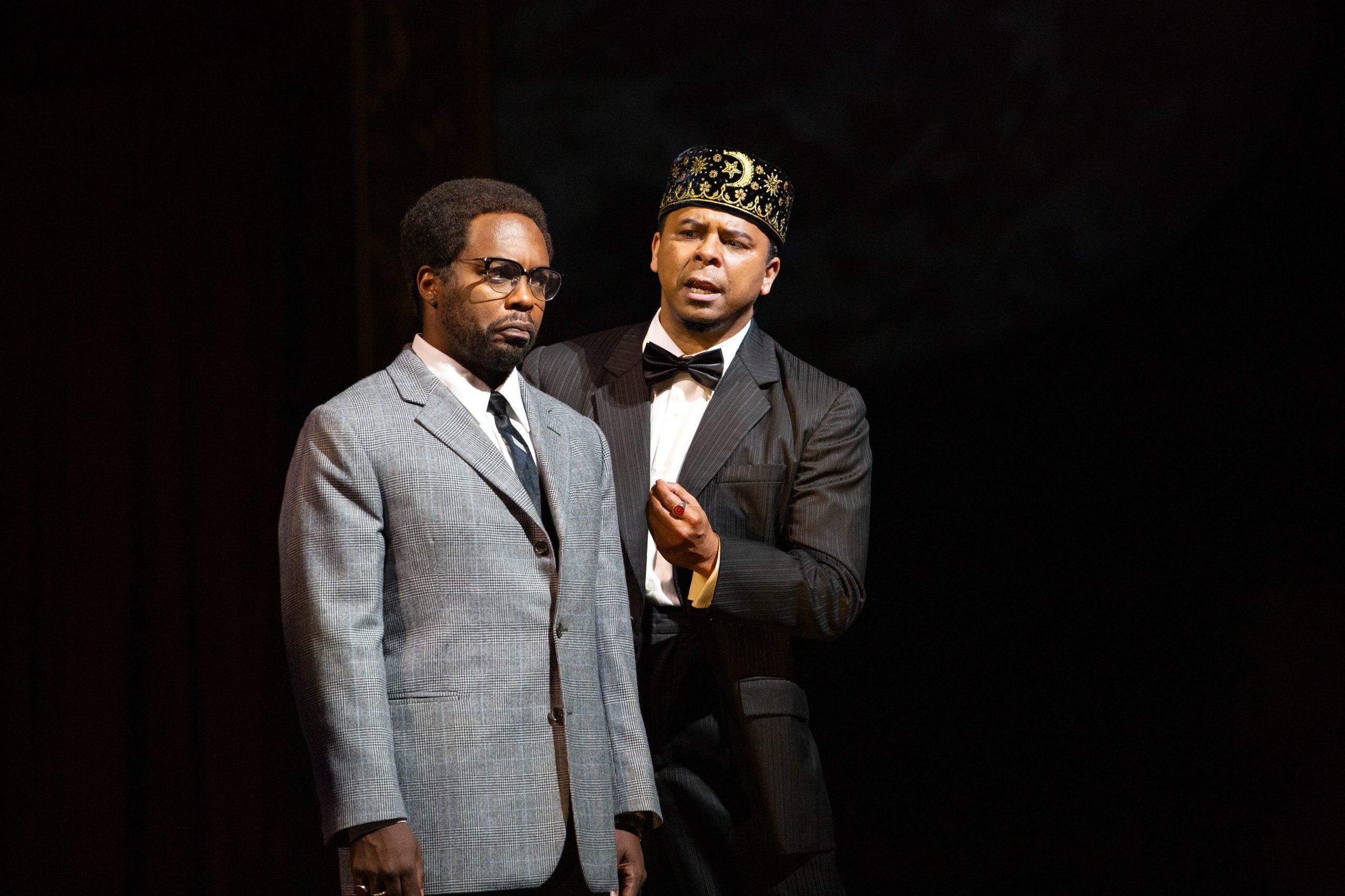
There is an “X” that hangs in front of The Metropolitan Opera House’s façade. The “X” is a banner, created by artist Glenn Ligon, where a black bold ‘X’ (of Malcolm X) is affixed a “field of hand-stenciled dates that mark the arrival of enslaved Africans in America,” as he describes it. The art is essentially an advertisement for the opera, X: The Life and Times of Malcolm X, but still, there is great magnitude in the single letter.
Malcolm X took on “X” as a last name, after joining the Nation of Islam. It was a rejection of the slave master name “Little,” and represented the African name that he would never know. Today the letter is an insignia, of sorts. X it is donned on t-shirts and hats—but remains a representation of a man who was honored, feared and revered in his lifetime. Malcolm Little. Detroit Red. Malcolm X. El-Hajj Malik El-Shabazz. He was “Our Shining Black Prince,” as Ozzie Davis eulogized him.
Opera is a white European art form that has largely excluded people of color. The significance of putting an opera about the revolutionary life of Malcolm X at The Metropolitan Opera House is not lost upon the opera’s director, Robert O’Hara. As the Met is one of the most famous opera houses in the world, he says that the institution must earn the right to tell this story.
“You can’t put an ‘X’ on the front of your building and have people come in and that you can just go and sit down and comfortably watch this opera,” O’Hara tells ESSENCE.
X: The Life and Times of Malcolm X, which first premiered at the New York City Opera in 1986, opened at the Metropolitan Opera House on November 3. It is only the third opera written by an African-American composer, in the Met’s 140 year history. The opera’s music is composed by Anthony Davis; the libretto is by Thulani Davis; and the story is by Christopher Davis. This group of cousins conceived of the opera decades ago to tell the story of X, a “tragic hero,” as a musical drama. Tony-nominated director Robert O’Hara (who also directed Slave Play) leads the opera’s production. He is the Met’s second Black director.
 Scenes from X: The Life and Times of Malcolm X
Scenes from X: The Life and Times of Malcolm X
“It’s significant,” says O’Hara as he reflects on the meaning of bringing X’s story to the Metropolitan Opera stage. “But you also have to acknowledge the fact that something hasn’t been going great in this situation. No one gets a hero cookie for doing this, right? It should have been done much sooner. I should not be the second, I should be the 200th Black director,” O’Hara says.
While the institution, itself, does not deserve a congratulatory nod, the people, voices, and visionaries behind the X opera, certainly do.
X: The Life and Times of Malcolm X is absolutely stunning. The three-hour opera is a gorgeous homage to the life of X, and a continuation of his legacy. The opera starts and ends at the Audubon Ballroom in Harlem. The opening scene reveals a looming spaceship that through a beam of light “downloads” the entire opera into the performer who plays Malcolm, while scrolling the names of Black and Brown people who have fallen to police brutality and hate crimes, indicating the sobering reality that these acts of violence still exist. The opera employs the use of Afrofuturism and is an imagining of X into the future, courtesy of O’Hara’s fantastical vision.
 Scenes from X: The Life and Times of Malcolm X
Scenes from X: The Life and Times of Malcolm X
The director’s understanding of Afrofuturism is simple: it is imagining the Black body in the future.”Fully functional and in control of its own story,” he says.
“I think that even the idea of imagining yourself out of slavery could be Afrofuturistic. As Black people, we had to imagine ourselves in a better place. Especially in this country. When [Martin Luther King Jr.] King would say, ‘I’ve been to the mountaintop.’ That to me is Afrofuturistic,” explains the director.
O’Hara transports the audience to both the past (journeying through Malcolm’s life) and the future throughout the entire opera. What is equally striking is that in X: The Life and Times of Malcolm X, the Met stage runneth over with Black performers.
Baritone Will Liverman sings the role of Malcolm X. Soprano Leah Hawkins sings as both X’s mother, Louise, and Betty Shabazz. Tenor Victor Ryan Robertson is Elijah Muhammad. Mezzo-soprano Raehann Bryce-Davis sings as Malcolm’s sister Ella. Bass-baritone Michael Sumuel is Malcolm’s brother, Reginald. The cast is joined by a chorus of regal futuristic beings (who O’Hara refers to as the AF24), as well as dancers who animate the production. The director says that the dancers are the “conscious of the story,” and for those who are not opera aficionados, they move the opera along, adding to its vibrancy. This is no traditional opera—music is jazzy at times; characters wear zoot suits and conk wigs, while singing phrases like, “shoot your shot.” For one who is a novice to the artform, you will feel satiated.
While X: The Life and Times of Malcolm X is a tremendous cultural moment, it also comes with an emotional cost to the cast and crew who relive X’s murder, with each curtain.
“Essentially, what we are doing is murdering a Black man every night and putting it on for a show. That will cost us something as people doing this every night,” says O’Hara. The director anticipates an emotional “cost” of reenacting the assassination, night after night on the Met stage. In turn, O’Hara requires the audience to experience an opera that might cause their discomfort.
“When you tell the truth, it is sometimes uncomfortable, and a lot of opera is about madness and murder and rape, they’re comfortable with that. But if you add race into it, people become uncomfortable.” The director explains, “Malcolm X wasn’t invested in your comfort. He was invested in the truth.”
O’Hara wants the audience to remember the luminary for who he was, a fearless truth teller, and what his legacy continues to be. “You can’t put Malcolm X in a box,” says the director. X was a civil rights leader: one who vociferously spoke out for Black pride and self-determination, but he was also an advocate for human rights (particularly towards the end of his life). Indeed, Malcolm X was one who believed in a liberated future.
“A liberated future for Black people has to be a liberated future for all people because I cannot be liberated without my sisters and brothers and my fellow comrades and all their struggles.” O’Hara continues, “Malcolm returned from Mecca as a human rights activist, and it was the first time that he had seen white people as Muslims or Asian people as Muslims. And so I think that he would have the same reaction: ‘I cannot be liberated without everyone else around me being liberated.’ And that’s what a Black liberated future looks like.”
‘X: The Life and Times of Malcolm X’ runs at the Metropolitan Opera House until December 2.
The post <strong>Reimagining Malcolm X Through Opera</strong> appeared first on Essence.

0 Commentaires